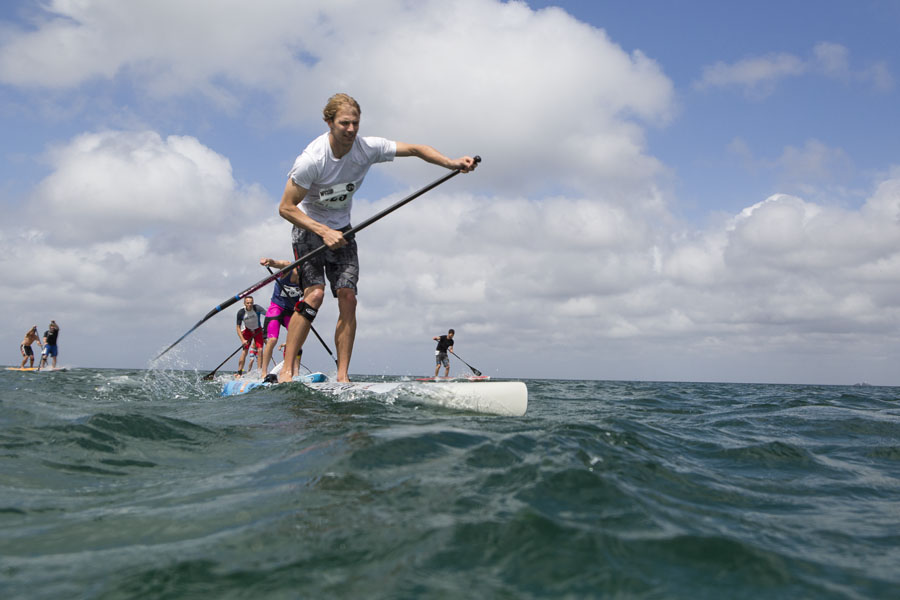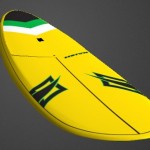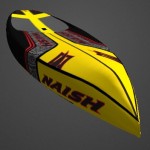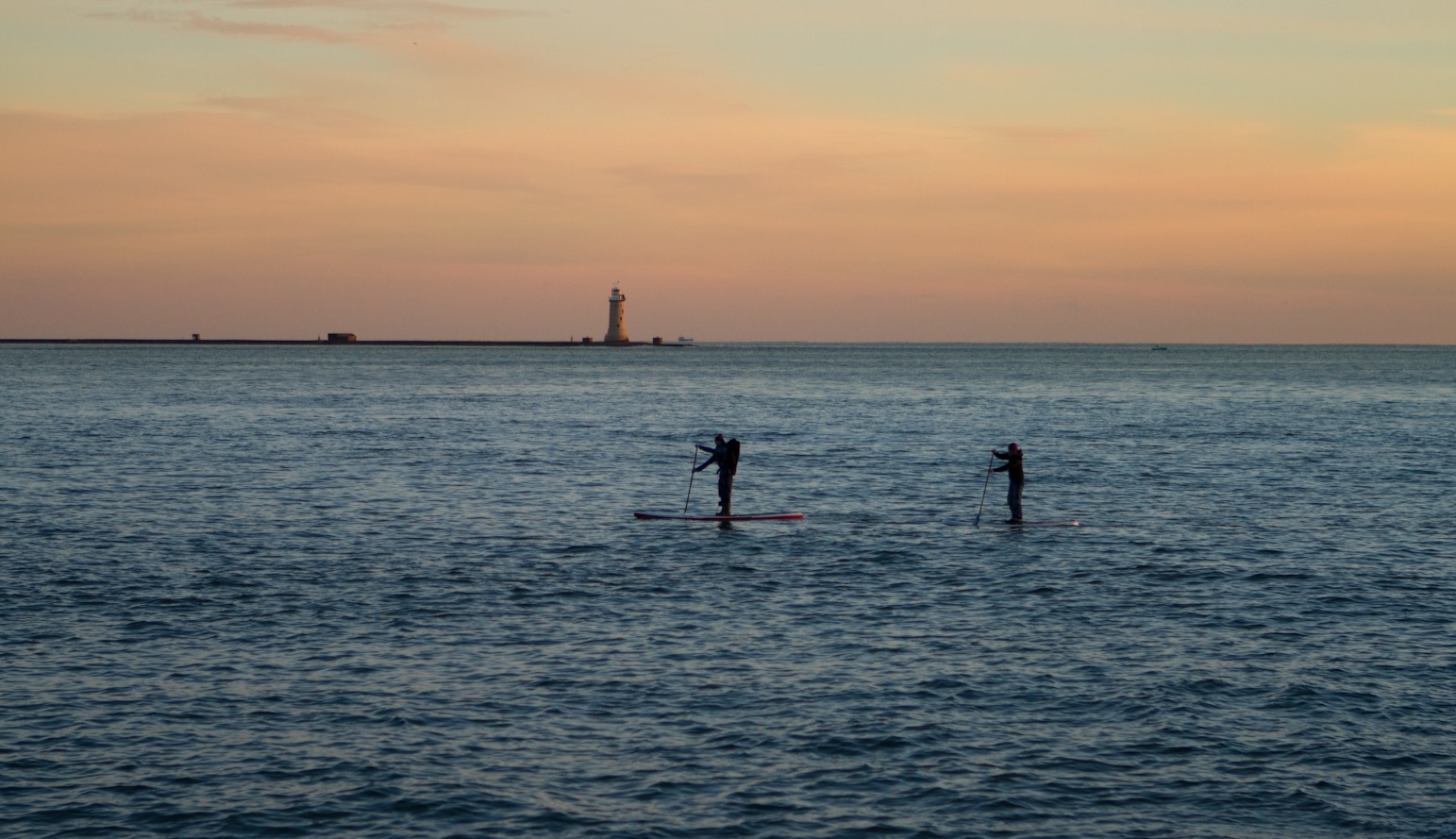
Cadence is a word used to describe speed, be that of speech, footsteps or paddle stroke rate. In paddleboarding terms it is not the speed we move through the water but how many paddle strokes we take over a period of time, usually expressed as a number per minute. Common thinking is that higher cadence = more speed but this is not always the case, as there are a lot of factors that influence SUP cadence.
Cadence is something that all ability and types of paddlers should consider, because just by thinking about your paddle stroke and stroke rate you could find yourself going further and faster for the same effort. And that could mean not only winning races but also having a more enjoyable leisurely Sunday afternoon paddle, being able to explore further, plus catch more waves!
SUPboarder takes a back to basics look at cadence (stroke rate), what factors can effect it, and why it’s worth thinking about if you haven’t already!
Technique
We all know someone who paddles effortlessly regardless of the conditions. They may not be the fastest paddler we know but if they have good technique then they will be more efficient than most and as a result will probably enjoy their paddling more. Technique in itself is a complicated subject and SUPboarder will be covering that later in this series. Previously we have featured instructional videos from Sam Ross from Basic Paddling to How to Improve Your Stroke, click here.
Blade
Current thinking on blade size is that less is more, and the smaller the blade the higher the cadence that any paddler can maintain. This makes a lot of sense but as with all rules of thumb there are exceptions! A larger paddler should have more muscle mass and more power so they should use a larger paddle, right? Not necessarily!
The blade we paddle with is part of a mechanically simple tool, the paddle. This is made up of three parts, the handle, shaft and blade. All play a part in the transfer of energy from the paddler to the water propelling us forward. If the paddle is heavy then that will influence stroke rate more than the blade size, as a paddler will tire more quickly than the same paddler with a lightweight exotic paddle.
A high performance blade used by an inexperienced paddler could result in flutter on each stroke meaning that power is lost per stroke, and therefore a lower cadence may be more appropriate until their technique improves. A shaft that is very stiff and unforgiving will put more pressure on the paddlers wrists, elbows and shoulders leading to fatigue and a reduction in power per stroke.
As well as the materials used in the paddle the shape and size of the blade will vary paddler to paddler, this will come down to personal preference, how the blade feels in the water. That’s not just down to the size of the blade but also the shape and design. The same blade shape and size will have a different feel if made in different materials, some manufactures will offer their blades in plastic, glass and carbon versions.

The Starboard Enduro blades above range in size from 430 square centimetres to 650 square centimetres, a huge difference in the same range.
Nothing is simple. Choosing the right blade is a matter of personal preference and budget! It is well worth trying several, either at a demo day or through your local club, before investing in a new one.
Board
Less obvious is the choice of board on our cadence. A narrow race board with a piercing nose moves effortlessly through the water, and lends itself to a high stroke rate, encouraging the paddler to paddle faster, go faster, race faster. But if you look at the national race series you’ll see a full range of board sizes and widths and different stroke rates for all competitors. For example take UK SUP racer Crispin Jones – on his 30” wide K15 (shortened to 14 feet) he used the biggest paddle blade possible through the 2015 season, his board lending itself to a high speed but with slow acceleration, suiting a bigger blade with a lower cadence.
A board with a rounder nose will not move as efficiently through the water as a race board so a higher cadence may not result in a more efficient paddle. A slower cadence may result in more enjoyable and effective paddle.
Water Conditions
No one can control the conditions we paddle in. On a perfectly flat day it is easy to settle into a good rhythm with a high cadence, to relax and get the most out of each stroke. And on a really good day this will feel effortless.
On less than perfect days we may need to recover the paddle slightly higher to miss chop or feather the blade into a headwind, adapting paddle stroke to conditions, and varying our cadence as we go. For example a short sprint into some chop or using longer slower strokes when running with tide or wind.
The Paddler
Probably the biggest influence on cadence is our own fitness and our natural paddle stroke Some will be suited to high cadence and others to lower cadence. We can change this to a degree with training and practice but matching a paddle blade to our own internal stroke rate will result in a better application of your strength.
Your own natural cadence will change over time, as you paddle more the muscles used will adapt to your stroke, muscle memory. As your fitness, flexibility and strength change so will your natural cadence. So a paddle that you’ve had for years may now not give you the best return for the energy expended on each stroke.
So if you haven’t already, think about cadence next time you’re on the water. Have a go at changing your paddling stroke speed to see how it makes you feel and how it effects your paddling performance. And try out a few different sized paddle blades and boards too.
Images : SUPboarder
Feature image of Ollie Shilston Taken by Greg Dennis / gregdennis.co.uk



